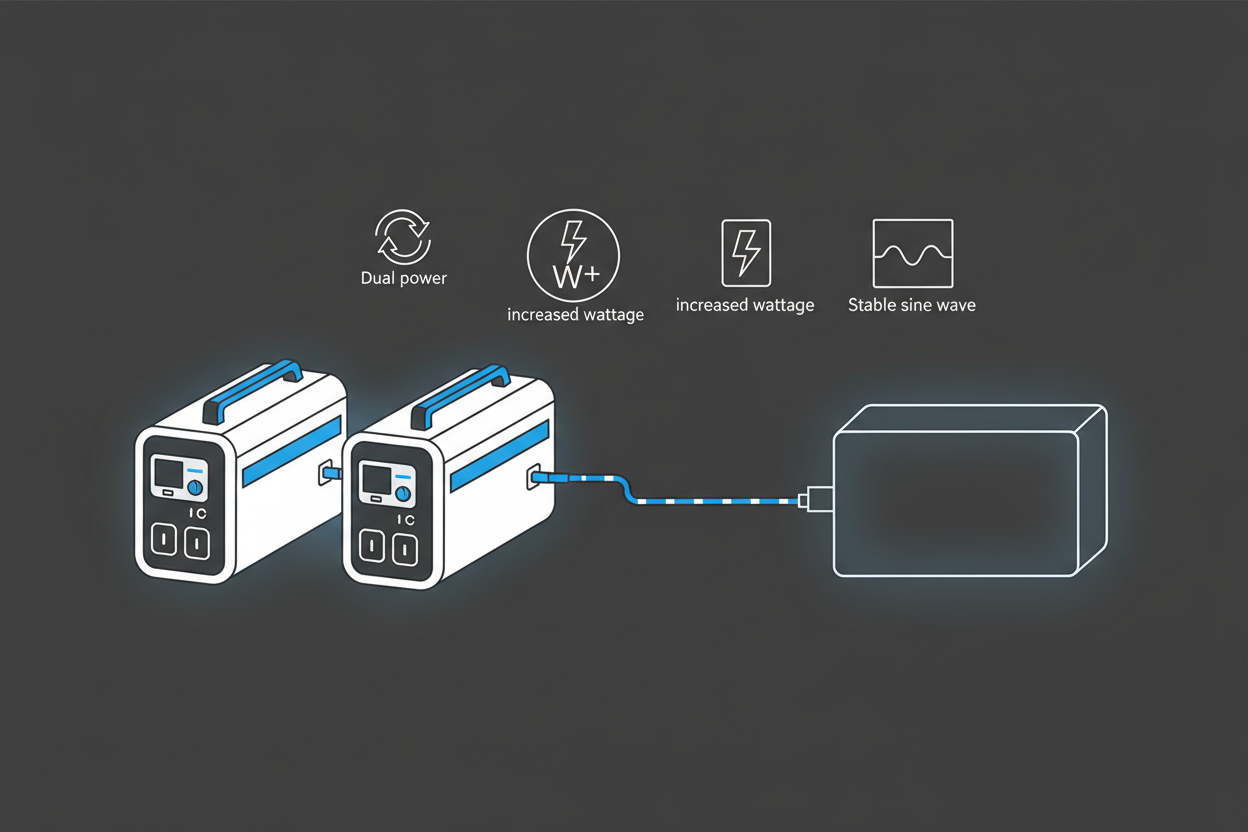Introduction
One of the strongest advantages of inverter generators is their ability to operate in parallel. By connecting two compact units, users can achieve the same power output as a single large generator while keeping the benefits of low noise, high efficiency, and easy portability. This guide explains how parallel inverter generator systems work and when they make the most practical sense. For a full overview of inverter technology, see the Inverter Generator Guide.
Why Parallel Two Inverter Generators?
Parallel operation offers several key advantages:
- higher total wattage output
- ability to run RV air conditioners
- built-in redundancy—one unit keeps running if the other stops
- lighter equipment to transport compared with single large generators
- flexible fuel options when using dual-fuel models
- quieter overall performance
For RV users, outdoor travelers, and homeowners who need flexible high power occasionally, parallel setups offer an ideal balance of mobility and performance.

How Parallel Operation Works
Inverter generators create AC power, convert it to DC, then digitally reconstruct a pure sine wave. Because the final output is computer-controlled, two generators can:
- synchronize voltage
- match frequency
- share load evenly
A dedicated parallel kit connects the units safely and ensures balanced power flow. For more on clean sine wave output, see What Is THD in Generators?.
What You Can Power With Parallel Generators
Two 2000W–2400W inverter generators paired together can typically run:
- RV 13,500 BTU air conditioner
- microwave ovens
- refrigerators
- coffee makers
- lights and household electronics
- common power tools
- portable heaters (depending on load)
Combined, this setup provides capability similar to a 4000W–4500W single inverter generator.
Do Both Generators Need To Be the Same Model?
In most cases: yes.
Manufacturers generally recommend matching:
- brand
- model
- wattage class
Mixing different models or sizes can cause:
- uneven load distribution
- overheating
- unexpected shutdowns
- unstable power output
Always use an official, manufacturer-approved parallel kit for safe operation.
Fuel Considerations for Parallel Operation
Parallel-ready inverter generators can run on:
- gasoline
- propane (dual-fuel models)
- a mix—one on gasoline, one on propane
Even when fuels differ, the inverter modules still match voltage and frequency automatically. For a deeper look at efficiency differences, see Inverter Generator Fuel Consumption.
Noise Levels With Two Generators
Two smaller inverter generators running at medium load are often quieter than a single large generator operating near maximum capacity.
Typical combined sound levels:
- 55–62 dB depending on load
- suitable for most RV parks and campgrounds
Parallel systems maintain the low-noise benefit that makes inverter generators popular.
Safety Tips for Parallel Operation
To operate safely:
- use only the manufacturer’s parallel kit
- connect generators before plugging in appliances
- place both units outdoors with proper ventilation
- avoid exceeding the combined wattage rating
- monitor surface temperature during long use
- never create DIY or modified parallel cables
Parallel ports are designed specifically for safe synchronization—standard outlets should never be used for paralleling.
When You Should Consider Parallel Operation
Ideal for powering:
- RV air conditioners
- portable heaters
- kitchen appliances
- home backup surges
- high-load power tools
Not required for low-wattage items like:
- lights
- phones
- routers
- laptops
- small appliances
Parallel setups are especially useful for RV travelers wanting flexibility without the weight of a standalone 4500W+ generator. For RV-specific sizing advice, see the RV Generator Guide.
Conclusion
Yes—two inverter generators can operate in parallel, and it’s one of the best ways to increase power output while maintaining portability, fuel efficiency, and low noise. A proper parallel kit ensures safe synchronization and smooth performance for RV, camping, and home backup needs.
Explore more power configuration options in the complete Inverter Generator Guide.
